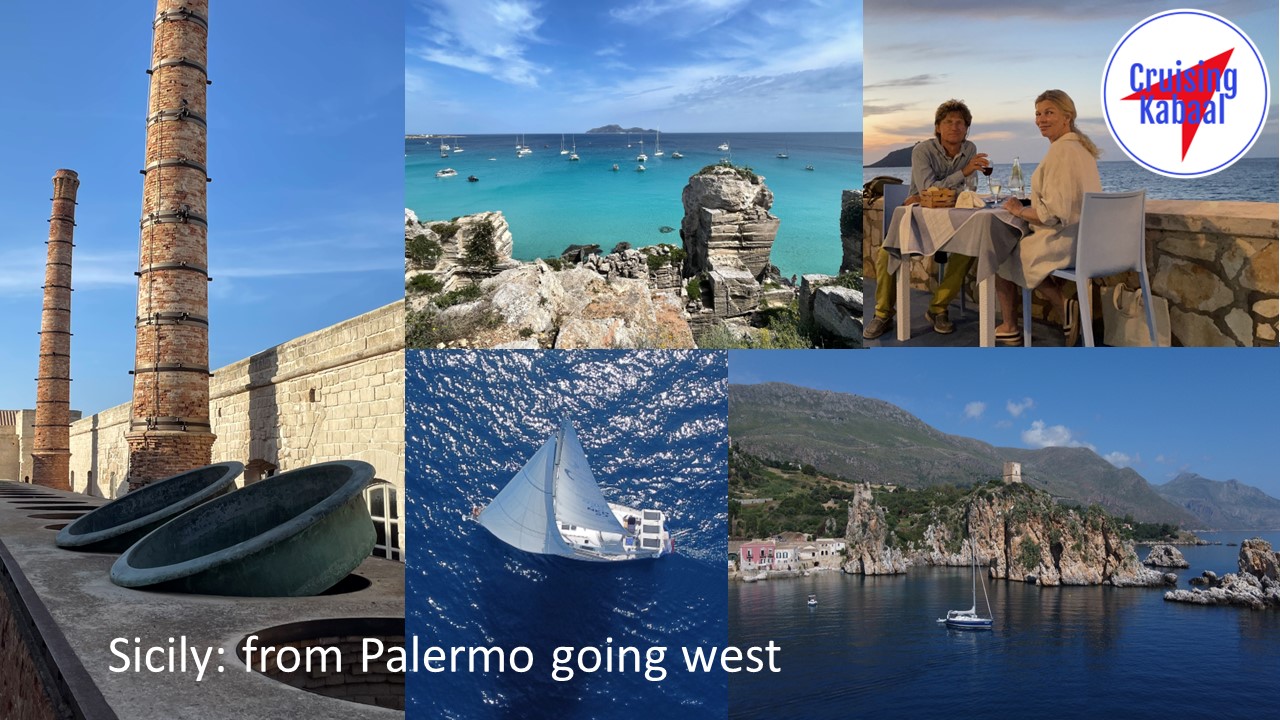



After the city of Palermo and its full and busy streets and markets we enjoy the quiet anchor spots at la Tonnara di Scopello and the nature reserve of Zingaro. During daytime a great many small boats join us for lunch and a swim but soon it gets all quiet again and by the end of the day we have the beautiful spot to ourselves.











Nature is blooming as it is spring and we admire the wild acanthus and high grasses in the reserve. A prehistoric dwelling proves that this paradise apealed to men since long ago. We pass an old farm which is now a small museum about the rural life which was led in this remote part of Sicily. Only accesible by foot the locals made baskets of the tall grasses and would bring them to the market with a donkey. A harsh life.




The wild Egadi archipelago is composed of three main islands. Just a stones throw from Tunisia the rocky islands are set within Europe’s biggest marine reserve. We sail from Trapani to Favigna passing by the Isolotto Formica, Ant Island, which only consists of an old Tonnara but is not accessible. Arriving at Favignana we decide to take a berth in the village harbour which is a popular spot for the evening passegiata.












Favignana once was the tuna capital of the world and the tonnarotti, fisherman, would row out for the tuna catch in long wooden boats. The Mattanza as it was called, was an anciant fishing method and quite brutal.The water would turn completely red as the fishermen would jump in the nets to massacre the large tuna with hooks and knifes. In the Tonnara their wifes would work at the cannery to cook the tuna and put the meat in the colourful cans of the Florio family.
The house of this family and the old Tonnara are a museum now and the place, once brimming with the hard working inhabitants of Favignana is all serene and empty now.





We rent a bike to explore the eastern part of the Island. It looks flat and dry and windy but when we get on we discover steep quarries with houses and flowery gardens on the bottom. Hidden from sight and from the harsh african desert winds. Once descended into the quarries we enter a labyrinth of paths and grotto’s which make for stunning vistas with the azure sea in the background.









Marettimo is the most western island of the Egadis and of Sicily. Nature is even more wild here and it is closest to the African continent. In the morning the local fishermen sell the catch of that night in the street. Weird looking sea creatures lay neetly next to eachother looking as if they are still trying to catch their breath. “Per la zuppa” sais the man as he wraps them in a newspaper, “Buonissimo!” and he laughs a teethless smile when I leave the goodies for him to sell to the local mamma’s. At sunset we climb to the old Roman ruins and a Byzantine chapel with a view fit for the ancients or the Lord.




The old fort with its light tower on the most western tip of Marettimo gives us shelter for the strong Scirocco wind blowing from Africa and so we spend a beautiful day at anchor, our last day at the lovely Egadi islands.
and here is the movie
